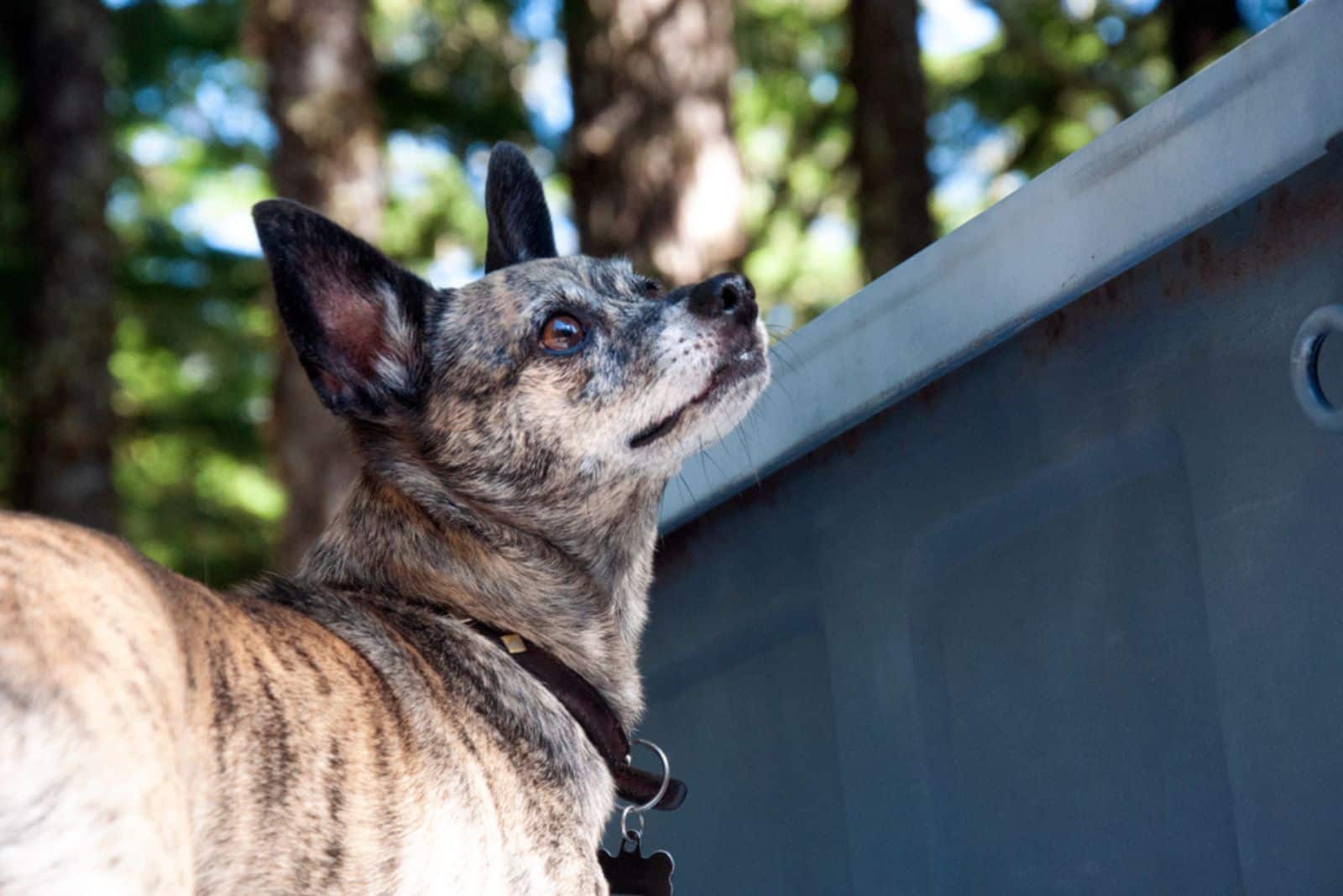Who likes a good little Chihuahua?
These small dogs are actually the smallest dogs in the world, and they make pawsome pets. Chihuahuas are simply appreciated worldwide.
But, what’s up with brindle Chihuahuas? Are they as desirable as any other Chihuahua coat color?
Today, we will discuss the brindle coat, and figure out whether it’s approved by the official clubs or not.
Stay tuned to see if brindle Chihuahuas are legit or not.
No matter what the answer is, one thing is certain: brindle Chihuahuas are beautiful.
Let’s see if that beauty comes with a price.
What’s A Brindle Chihuahua?
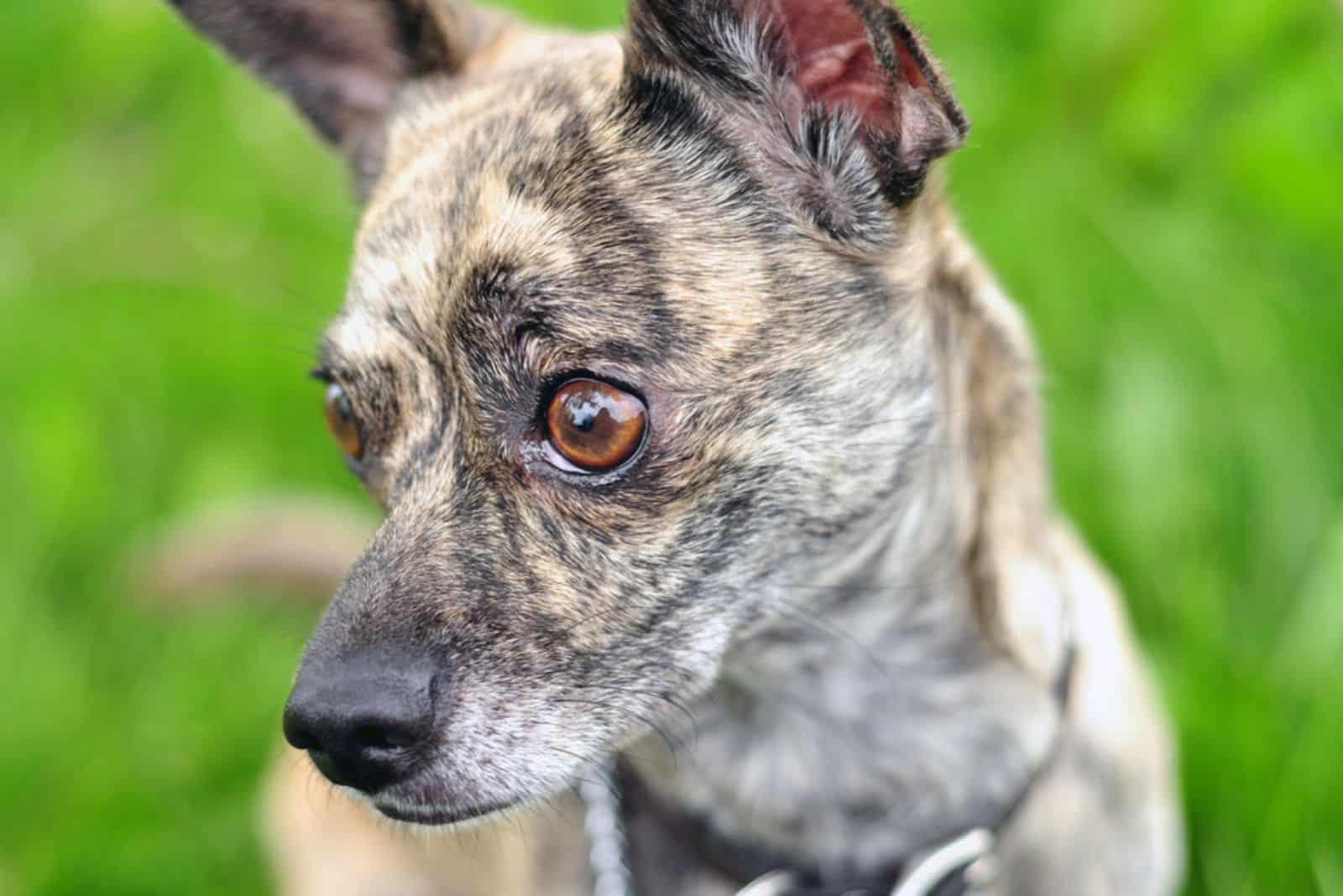
Many breeds of dogs come as brindle dogs. Those tiger stripes seem to be always trending if you ask our canine buddies. However, not every breed is born as a brindle, and not every pooch can pull off those stripes.
The brindle Chihuahua is, unfortunately, not an official Chihuahua color.
The American Kennel Club approves the following coat colors with this breed:
black
black and tan
blue and tan
chocolate
chocolate and tan
cream
fawn
fawn and white
red
All the other colors, including brindle and popular options like pure white Chihuahuas, silver, and gold are not welcome in the club. Such dogs can’t compete in official dog shows. They will be disqualified immediately as their coat color violates the Chihuahua’s breed standard.
So, the brindle Chihuahua is not in the game. What does this mean?
It means that whoever the brindle Chihuahua is, he’s not a purebred pup. To achieve the brindle coat with dogs that aren’t naturally brindle, the breeder needs to introduce another dog breed, meaning the brindle coat is a result of crossbreeding. This process usually happened back in the past, so today’s breeders breed already brindle Chis with non-brindles to increase the chance of getting the said coat.
An average brindle Chihuahua has a lovely appearance, featuring a base coat in light brown or gray, with tiger-like stripes in dark shades. Boxers and Shepherds usually feature a brindle coat, but it’s not limited to the canine world. Other animals can come as brindles, too!
Still, just because it’s natural with some breeds doesn’t mean it is with Chihuahuas. Brindle Chihuahuas are not standard. They are rare, but not in a good way, and you’re about to learn why.
Brindle Coat Genetics Explained
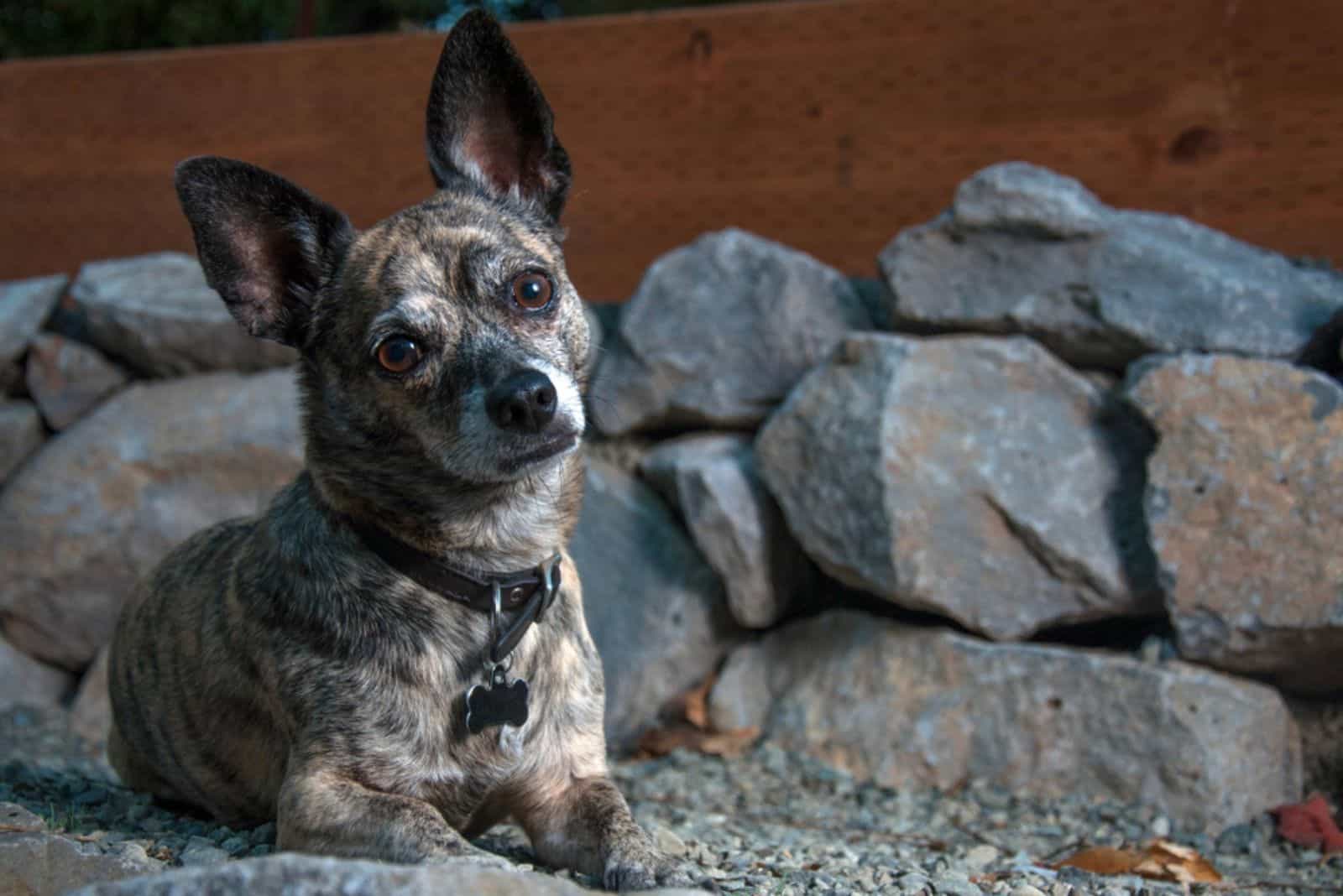
Many dog owners are a bit intimidated by canine genetics and how it works. They find the whole locus, alleles, dominant genes/recessive genes stuff pretty confusing. There’s really nothing to be afraid of because it can be very simple to understand how different coat colors occur.
The brindle coat (or the black and brownish stripes) is proof of eumelanin – a pigment present in the dog. The pigment that creates the base coat is pheomelanin, and it’s affected by the intensity locus. This means that the base can come in various shades, ranging from darker to lighter ones.
Unfortunately, breeder’s can’t use any of the popular tests to see if a dog will be a brindle or not. The only way to find out is to let the sire and dam mate and wait for the puppies.
Just like merle dogs, brindle Chihuahuas can become darker as they grow older.
Meet The Black Brindle Chihuahua
Black is a dominant color with lots of dog breeds. Some are solid-colored black, while some have colored markings.
As far as our Chihuahua is concerned, black Chis are pretty rare dogs. You’ll usually see black and tan Chis, but solid black ones are off the radar.
This is somewhat odd because the black pigment is a dominant one. Well, that’s why we have black brindle Chihuahuas! They’re a bit more common than their all-black versions.
Black brindle Chihuahuas have a dark base and dark streaks. They appear to be a bit washed-out as if they’re older canines. This mutation occurs with Chihuahuas of all ages, so you can scratch the fact that they’re just turning old. No… they’re black brindles, and that fact can’t be changed.
The black brindle coat is more visible if your Chihuahua is a long-haired one. You can really notice those tiger stripes all over the pup’s body. It’s super difficult to see them nicely with short-haired Chihuahuas.
Meet The Blue Brindle Chihuahua
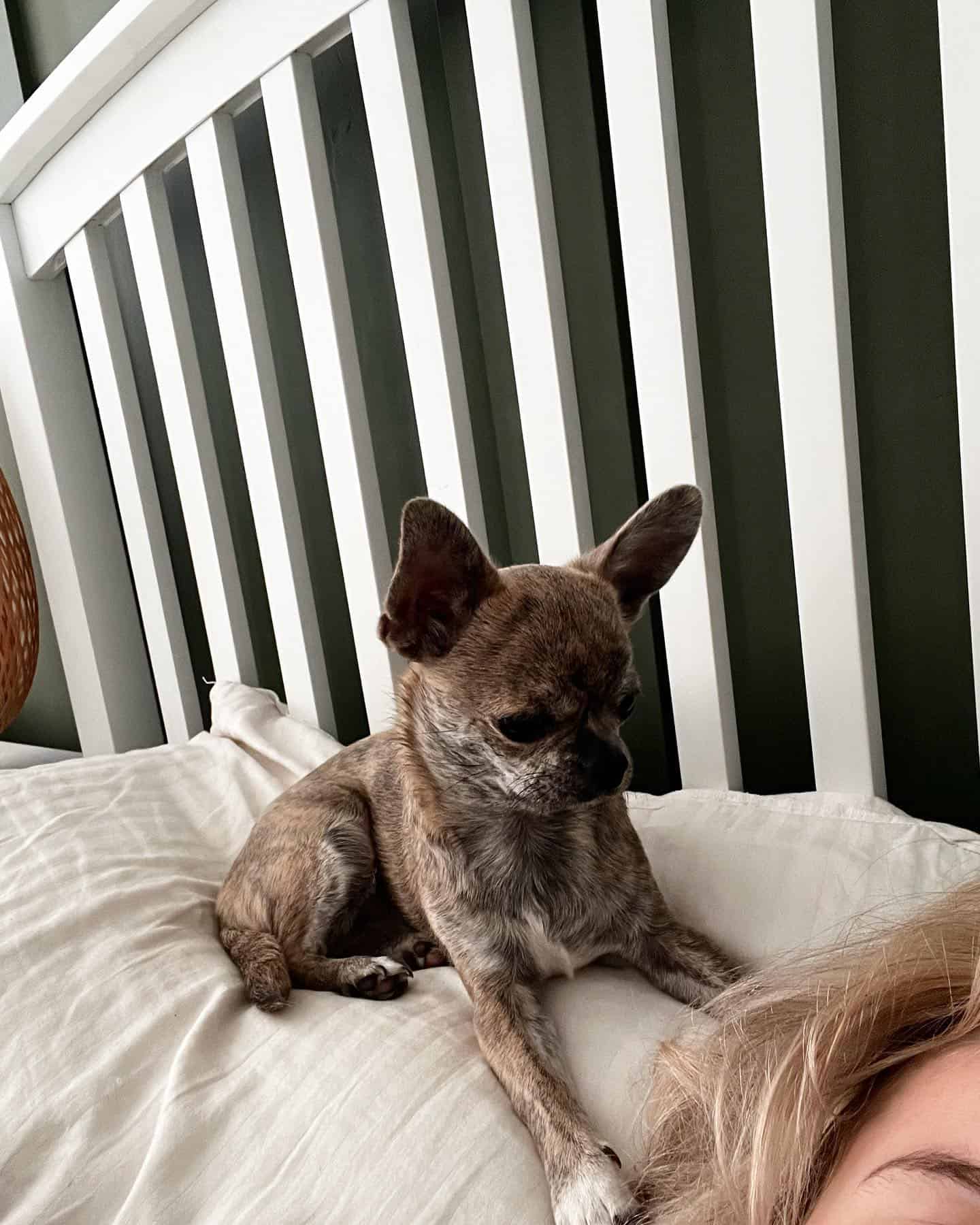
Blue is not an official color recognized by the American Kennel Club, so don’t expect blue brindles to be verified as purebred Chihuahuas either.
The blue coat brings along many controversies. It’s a result of pigment dilution, and sometimes even gene manipulation and crossbreeding. You never know the real story behind a blue pup.
Actually, the blue coat is more of a blueish-grayish shade. Some might say silvery gray! What’s so beautiful about this shade is that it shines nicely under direct sunlight, and transitions from blue to gray in various shades.
The blue coat color is what you get when recessive genes are in charge. Having recessive genes means they will be quite rare.
Just imagine how rare a blue brindle Chihuahua would be!
Blue brindle Chihuahuas have a bit darker tiger stripes. In most cases, such puppies will even have a blue nose and blue eyes.
A word of advice: I’d think twice before I bring a blue brindle Chihuahua into my home. Not only are they a result of questionable breeding, but they’re surely carriers of numerous health problems.
Here’s The Chocolate Brindle Chihuahua
Surprisingly, chocolate is a recognized Chihuahua color.
Some might think that a chocolate brindle Chihuahua would be a recognized Chihuahua, but that’s still not the case. Brindles will never be recognized by official clubs when it comes to this dog breed.
The Chocolate Chihuahua is a lovely little Chihuahua. These dogs come in lots of lovely chocolate shades. It’s a rich coat that will definitely make you want one.
When you add the brindle pattern to the chocolate part, you will see dark stripes on a dark coat. The difference is almost non-existent, but if you look closer, you’ll see the stripes.
Sometimes, chocolate brindles will come as chocolate fawn brindles. This means that the puppy will have a lighter coat – sometimes a bit reddish, with dark stripes.
Are Brindle Chihuahuas Healthy Dogs?
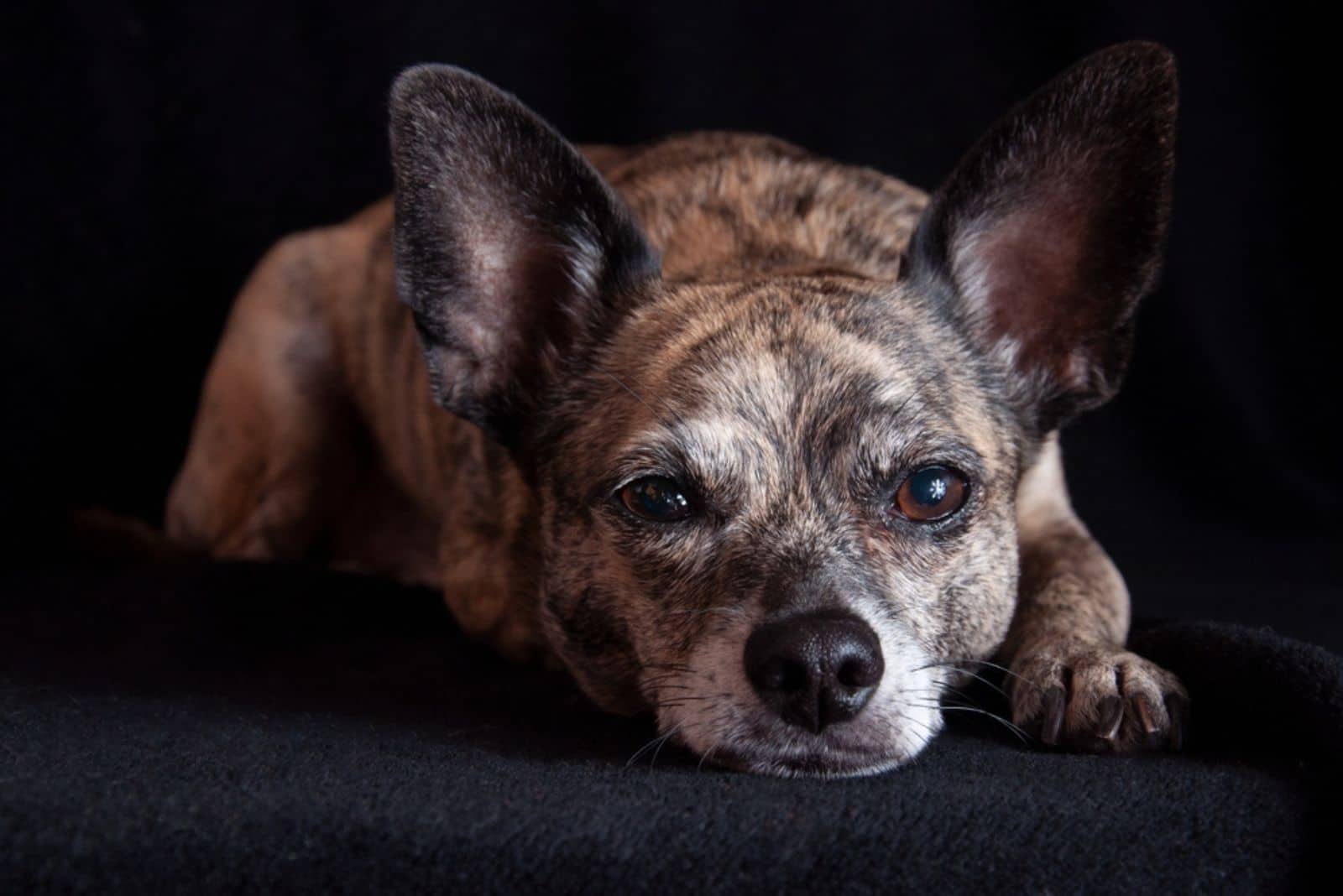
I wouldn’t say that Chihuahuas are the healthiest dogs in the first place. Thus, we can’t say that brindle Chihuahuas are healthy either, especially not given the fact of their origin.
To recap: brindle Chihuahuas are a product of crossbreeding. No reputable breeder will experiment and focus on brindle dogs.
Every mixed-breed dog, in this case, our brindle Chihuahua, comes with numerous potential health problems. They may or may not occur with each puppy, but it’s better to know them and be prepared.
As I said, Chihuahuas aren’t the healthiest dogs, but they can still live many happy years. The average lifespan of a Chihuahua dog is 12 to 18 years. I’ve seen Chihuahuas that are 20 years old! They’re tough little guys, and you can’t break them easily unless they begin to suffer from some of these health conditions:
eye conditions
Intervertebral Disc Disease (IVDD)
bladder and kidney stones
obesity
The mentioned health conditions aren’t something you can prevent by taking care of your dog except obesity. No one likes to see a fat Chihuahua. Such dogs are in constant pain, and they can’t move around properly. So, if you can prevent it, you better do it!
Does The Brindle Coat Color Affect The Dog’s Temperament?
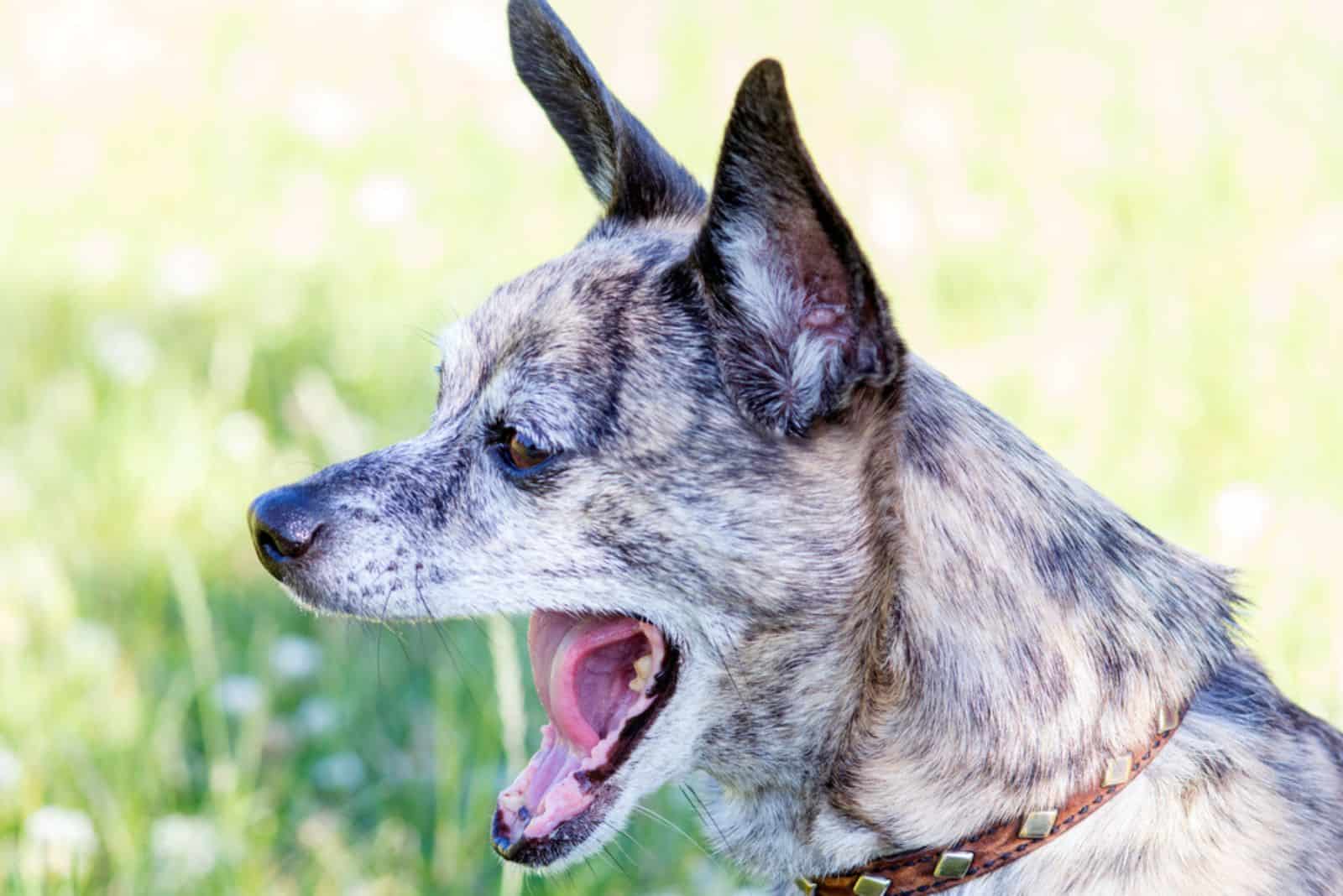
The coat color rarely affects a dog’s temperament, even though many people claim that it often does.
For example, pure black dogs are considered aggressive, while white pooches are super sweet and friendly. But, how many times have you seen a feisty little white Poodle? Probably a lot. Also, Chihuahuas of all colors can show aggression. This kills that statement about coat color and temperament immediately.
Brindle Chihuahuas shouldn’t be too different from regular Chihuahuas. Still, they do come from different parents. In other words, since these Chihuahuas are a mixture of Chis and some other dogs, it wouldn’t be unusual for the puppies to inherit the traits of that other dog.
The crossbreeding in the brindle line could’ve happened some time in the past, but the temperament genes can still survive for many generations.
Let’s say your brindle Chi has a Chihuahua and a brindle Terrier for a parent. Puppies usually pick up energetic and hardworking traits from Terrier parents. Standard Chihuahuas aren’t like that. They were bred as companion dogs – not working pups.
So, you can say that the brindle coat can alter the standard feisty Chihuahua’s temperament, but not just because of the color, but because of its origin.
Are Brindle Chihuahuas Expensive?
Standard Chihuahuas aren’t too expensive. The average pet-quality Chihuahua price is pretty affordable.
But, everything changes when the breeder adds the prefix rare.
Rare dogs are wonderful. Rare dogs are all the rage.
But, no one tells you what rare dogs really are. In almost all of the situations, less common colors will be unethically-bred dogs. When a breeder adds adjectives, such as rare or exotic, he wants to plump up the price and advertise such dogs for a lot more money than they deserve.
Take our brindle Chihuahua, for example. I’ve seen brindle Chihuahuas listed for up to $3,000. That’s insane! For $3,000, you can find a champion purebred Chihuahua puppy and rest assured you’ve got a dog with zero health problems.
When you buy a brindle Chihuahua from a non-reliable breeder, you’re also getting a huge chance of ending up with an ill puppy that will require all the veterinary help he can get.
So, to sum up… don’t get scammed and pay a lot of money for a brindle Chihuahua. Before you decide on a breeder, do your investigation.
If you need help with finding a good, purebred Chihuahua puppy, you should consider these lists of breeders:
FAQs
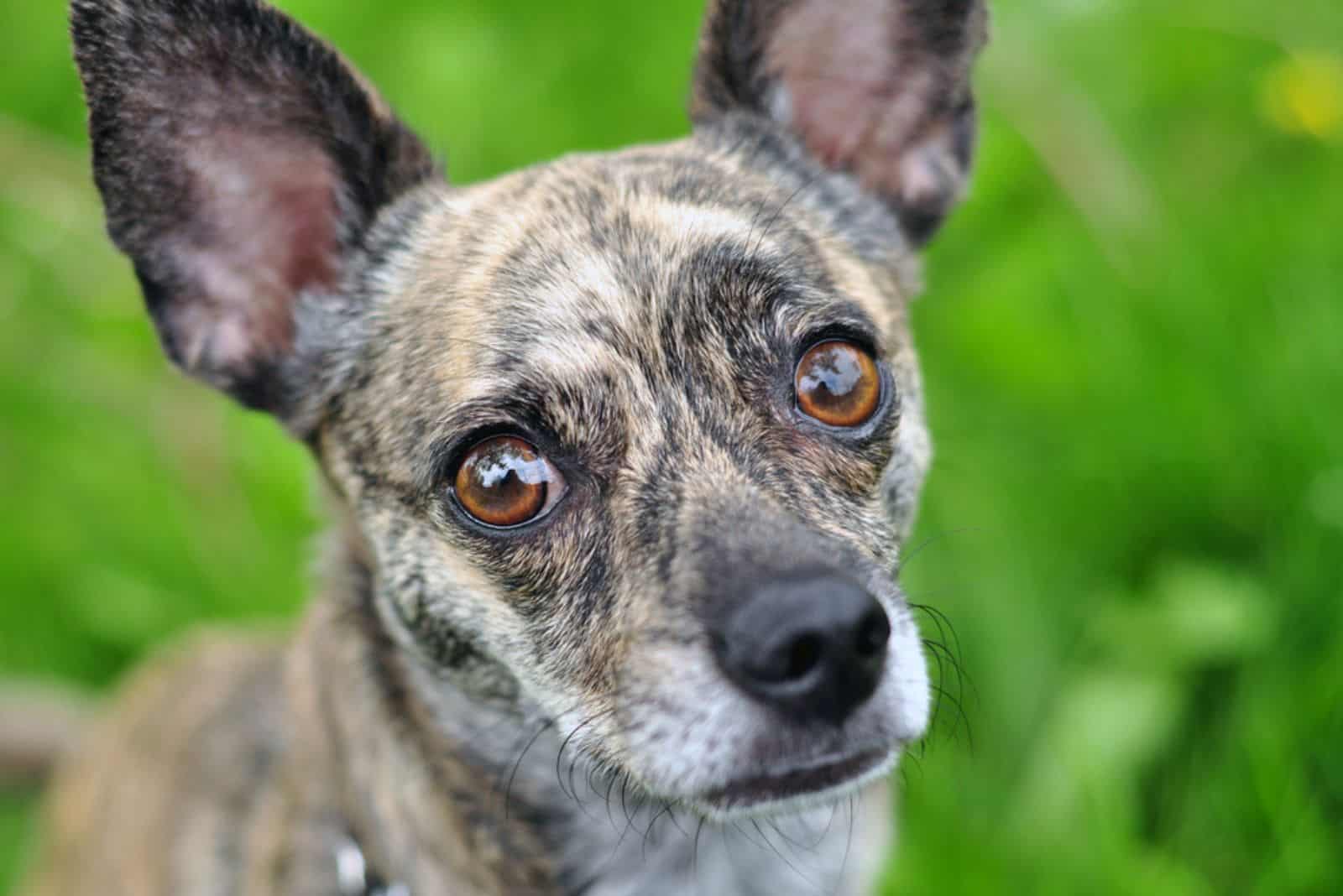
Believe it or not, brindle is not the rarest Chihuahua color.
Yes, brindle is definitely super rare, but another Chihuahua color takes first place. The white Chihuahua is considered to be the rarest one.
Watch out for rare Chihuahua puppies because they’re usually not real Chihuahua puppies at all. They’re one of the Chihuahua mixes with their origin yet to be discovered.
So far, we’ve learned that brindle Chihuahuas, as well as merle Chihuahuas, are considered unethical and not approved by canine clubs.
What makes you think that a teacup Chihuahua would be AKC-approved?
Sure, teacup Chihuahuas can be brindles, but they’re not something you’d want to own.
Teacup Chihuahuas are a result of poor breeding, often between litter runts. There’s really no point in discussing how unethical that is.
Just imagine the combination: a brindle mixed with a merle teacup Chihuahua.
Yikes!
When I think about it, there are more non-recognized than recognized Chihuahua colors. Seems like every day, there’s a new one.
The brindle gene is a strong one. But, this is not the only gene that works hard to create unusual coat patterns.
The following coat colors are also considered rare, and will never be recognized by the AKC:
black and white
black and red
black and silver
blue
blue fawn
blue merle
blue and white
gold
gold and white
cream and white
silver
silver and white
chocolate and white
chocolate brindle fawn
blue brindle fawn
black sable silver
fawn brindled black, and so on.
See, lots of different colors are waiting to be added into the family. Don’t worry – brindle holds its place steadily.
To Sum Up…
No one says that a brindle Chihuahua puppy isn’t a beautiful dog. They’re truly stunning… you can’t even take your eyes off of them. Whether they’re short-haired or long-haired Chihuahuas, brindle should not be an option.
This coat color is a result of mixing breeds either recently or some time in the past. Questionable mixing, usually accidental ones, without proper planning or conducting health tests can have terrible results.
You can end up with puppies having severe impairment, such as vision or hearing loss.
The cost of the beauty of a brindle Chihuahua is not worth it.
Think wisely. Pick a purebred puppy so the only thing you have to worry about is choosing a cool Chihuahua dog name!
